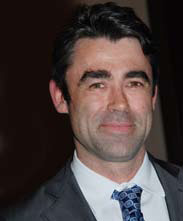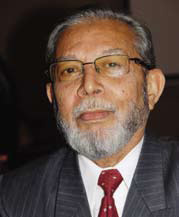ASHRAE EFC meeting focuses on sustainability by casting the spotlight on building codes and on CHP systems.
ASHRAE EFC meeting focuses on sustainability by casting the spotlight on building codes and on CHP systems.
The ASHRAE Emirates Falcon Chapter on February 17 reiterated the importance that sustainability deserves by hosting a presentation on building codes, followed by a presentation on CHP systems. The Chapter meeting took place at the Arjaan Rotana, Dubai.

Matthew Plumbridge
It was Matthew Plumbridge, Consultant (Environmental and Sustainability Planning) from the Department of Municipal Affairs, Abu Dhabi, who spoke on building codes. In his presentation, Plumbridge spoke of the International Energy Conservation Code, be it from the point of view of mechanical systems or in terms of lighting. In the case of mechanical systems, Plumbridge said, it was important to consider such factors as right-sizing the plant and equipment, energy recovery, set point and controls. And in the case of lighting, Plumbridge said, it was important to look at daylighting zones and lighting density for external and internal features.
In view of the fact that local conditions were different, Plumbridge said that the Abu Dhabi body was looking to develop the codes further. “In the local context, for instance,” Plumbridge said, “it is important to consider district cooling demand management.” District cooling, he said, was less efficient, owing to unknown demand. In that context, he spoke of establishing supply water temperature at 4ºC to manage risk and 50 square metres per tonne of refrigeration as a benchmark that could be achieved.
He further said that while with the subject of chilled water, it would be sensible to wonder whether or not we could engage in energy recovery from condensate water. “It is 13ºC water,” Plumbridge said, asking, “Instead of just using the water, why not use energy (chilled), as well?
In his presentation, Plumbridge spoke of a code for improving IAQ and for reducing carbon emissions. While drawing the code, he said, it would be useful to consider such factors as natural ventilation, ventilation rate, outdoor air percentage and TES.
Ainul Abedin, Principal Consultant at Ainul Abedin Consulting, who spoke next, conducted a masterclass on CHP/cogen systems, in the process sharing his decades long experience.
In his presentation, Abedin said that CHP feasibility and design depended on magnitude, duration, and electrical and thermal loads. Matching a CHP plant’s heat/ power ratio with that of building or process load, he said, was required for optimum economic benefit. That, he added, was a major challenge for HVAC engineers.
Getting into the nittygritty, Abedin said that the form and quality of the required thermal energy was important. If more highpressure steam was required, a reciprocating engine was less attractive as a thermal source than a combustion engine.

Ainul Abedin
Saying that CHP/cogen power plants were rated against incremental heat rates (fuel input) by comparing incremental fuel requirements with base case energy needs of a particular site, and that fuel consumption was the greatest contributor to operating costs, Abedin went into an elaborate description of reciprocating engines.
All recip engines, Abedin said, required clean and cool air for optimum performance. In that context, he added, it was crucial to avoid heated air, because power output dropped with a rise in engine temperature.
Quoting from experience, Abedin said that reciprocating engines had special requirements. For instance, he said, installing a separate exhaust for each engine reduced the possibility of condensation in the engine that was not running. Equally important, he said, was to allow for thermal expansion in exhaust piping (about 0.09 inches per foot). Further, he said, it would help to slope the exhaust away from the engine to prevent condensate back flow.
Speaking, then, on combustion turbines, Abedin said that they had been developed for stationary use as prime movers. Advantages of combustion turbine design, he said, included dual-fuel design; ability to meet stringent pollution standards; lack of necessity of cooling water; clean, dry exhaust; and lesser lubricating oil consumption.
On the flip side, a key disadvantage, he said, included a possible lower efficiency. “Also each 18F rise in inlet temperature decreases power output by nine per cent,” he said.
With the stage set, Abedin lapsed into a discussion on combustion turbine inlet air cooling (CTIAC) systems, which he said, increased the capacity and the efficiency of the turbine by increasing air density. Speaking of the importance of a CTIAC system, Abedin said, “When you need maximum power in summer, it derates by 30-40%; CTIAC helps to prevent this.”
Speaking, then, on the economics of CHP, Abedin said it was based on cost of equipment, installation, and operations and maintenance. For a CHP project assessment, Abedin highlighted the importance of a preliminary screening analysis, for simple payback, and a feasibility analysis, which consisted of energy analysis, conceptual development and financial analysis.
Copyright © 2006-2025 - CPI Industry. All rights reserved.